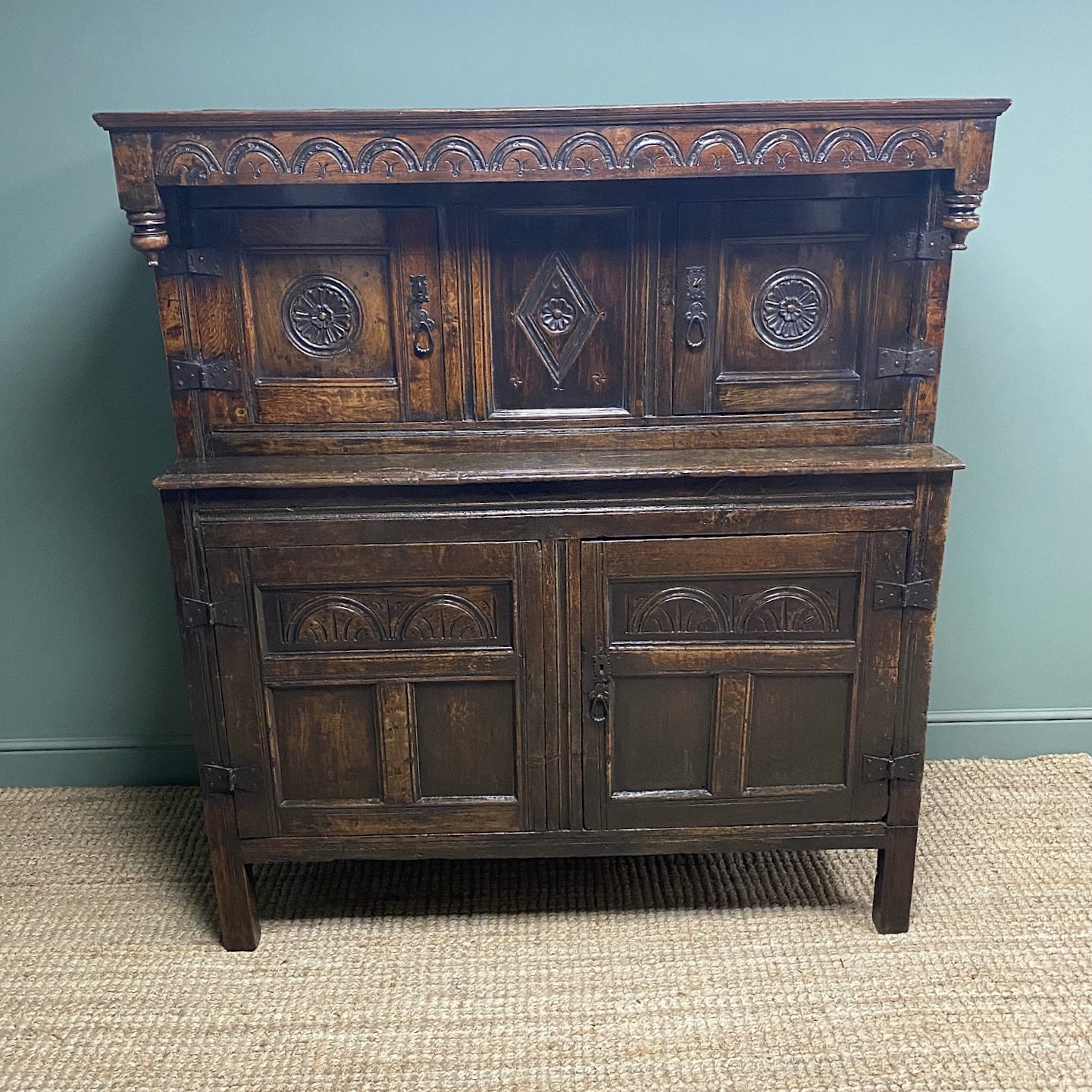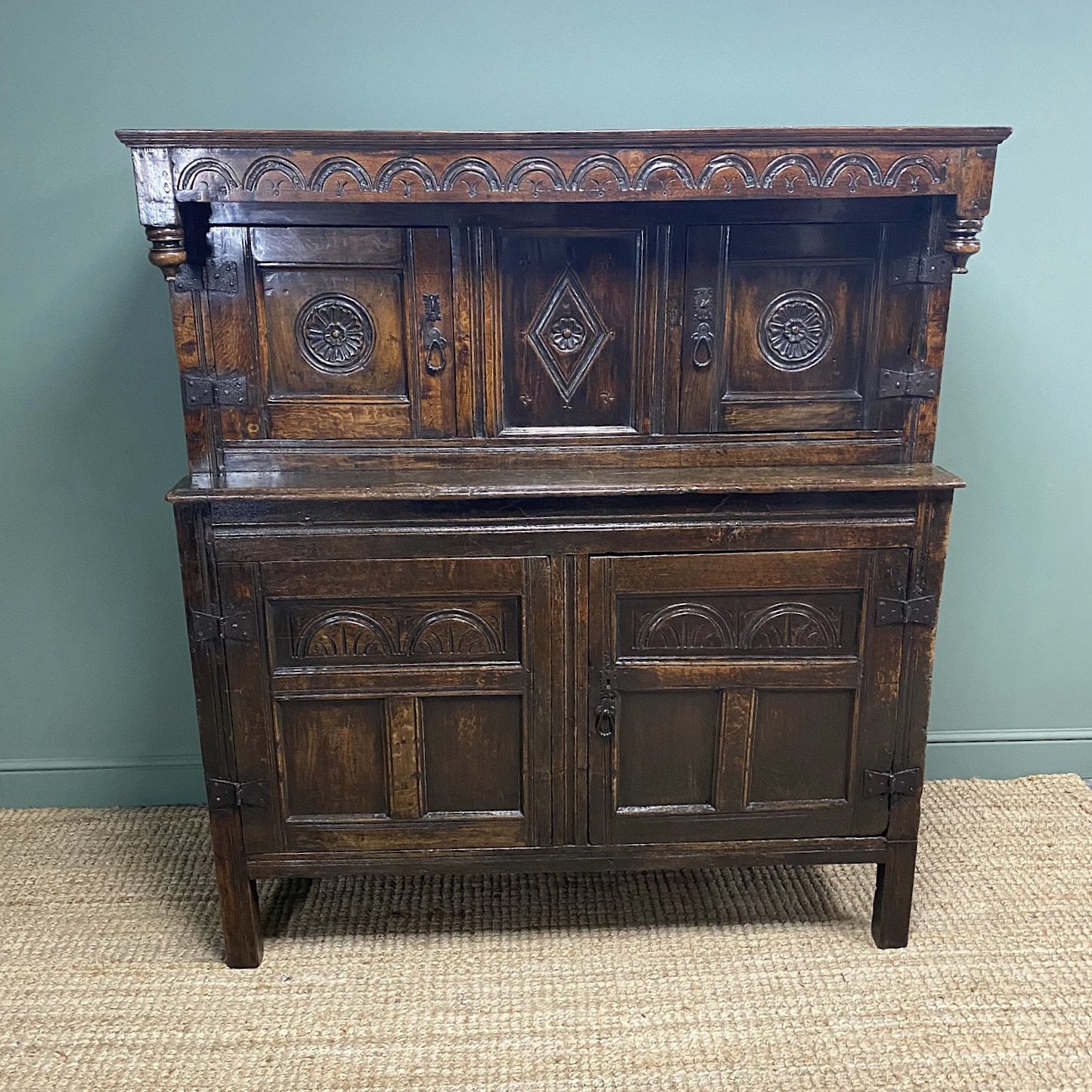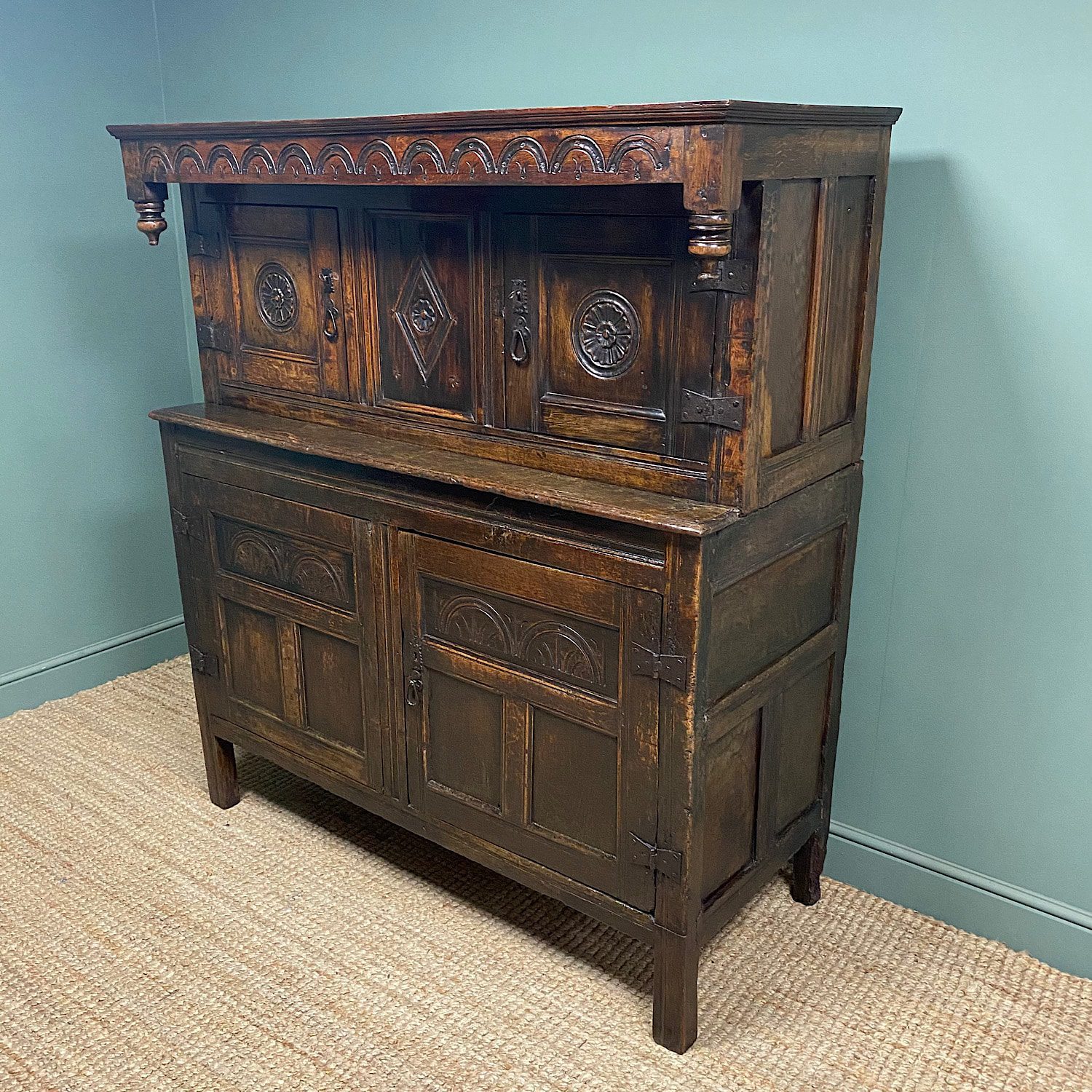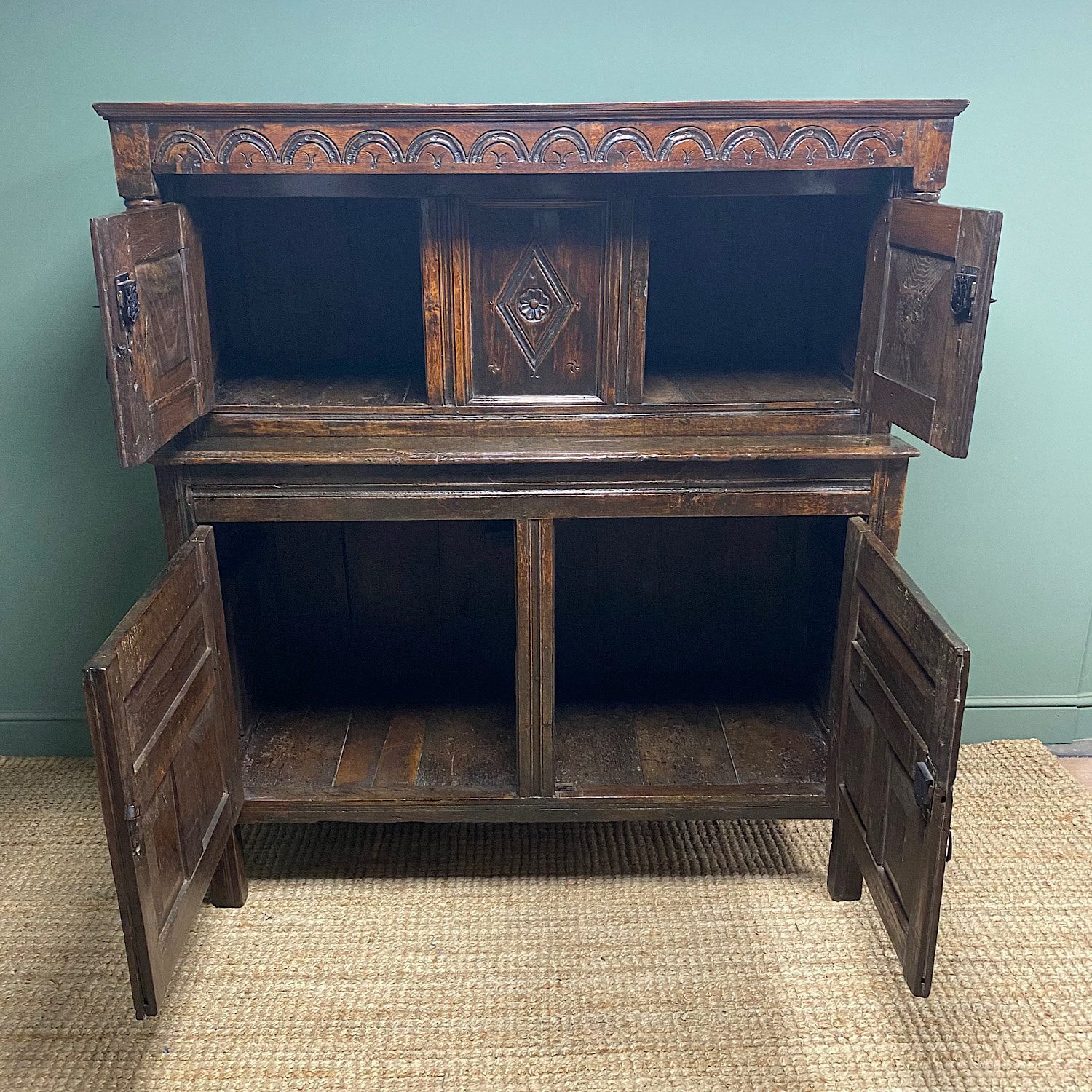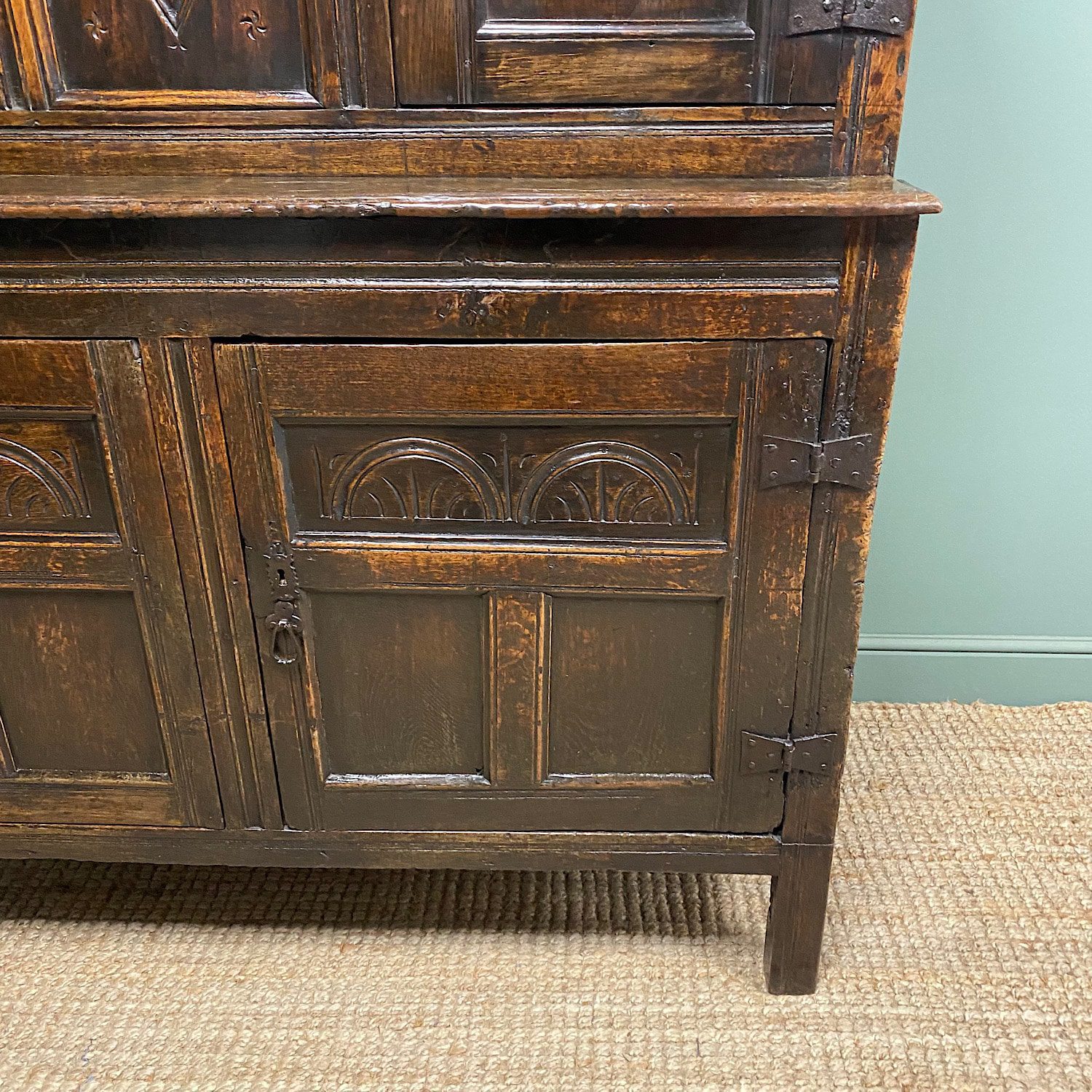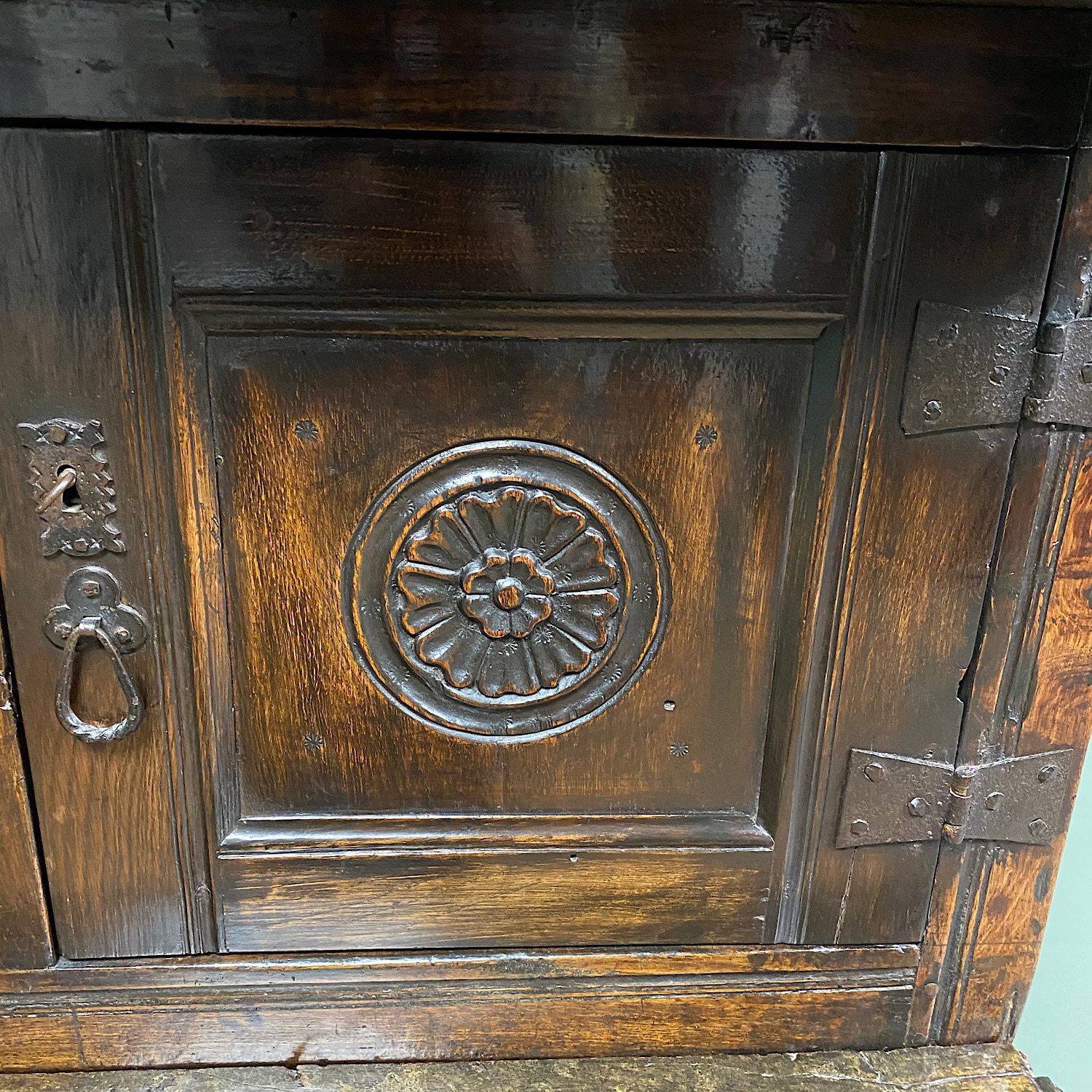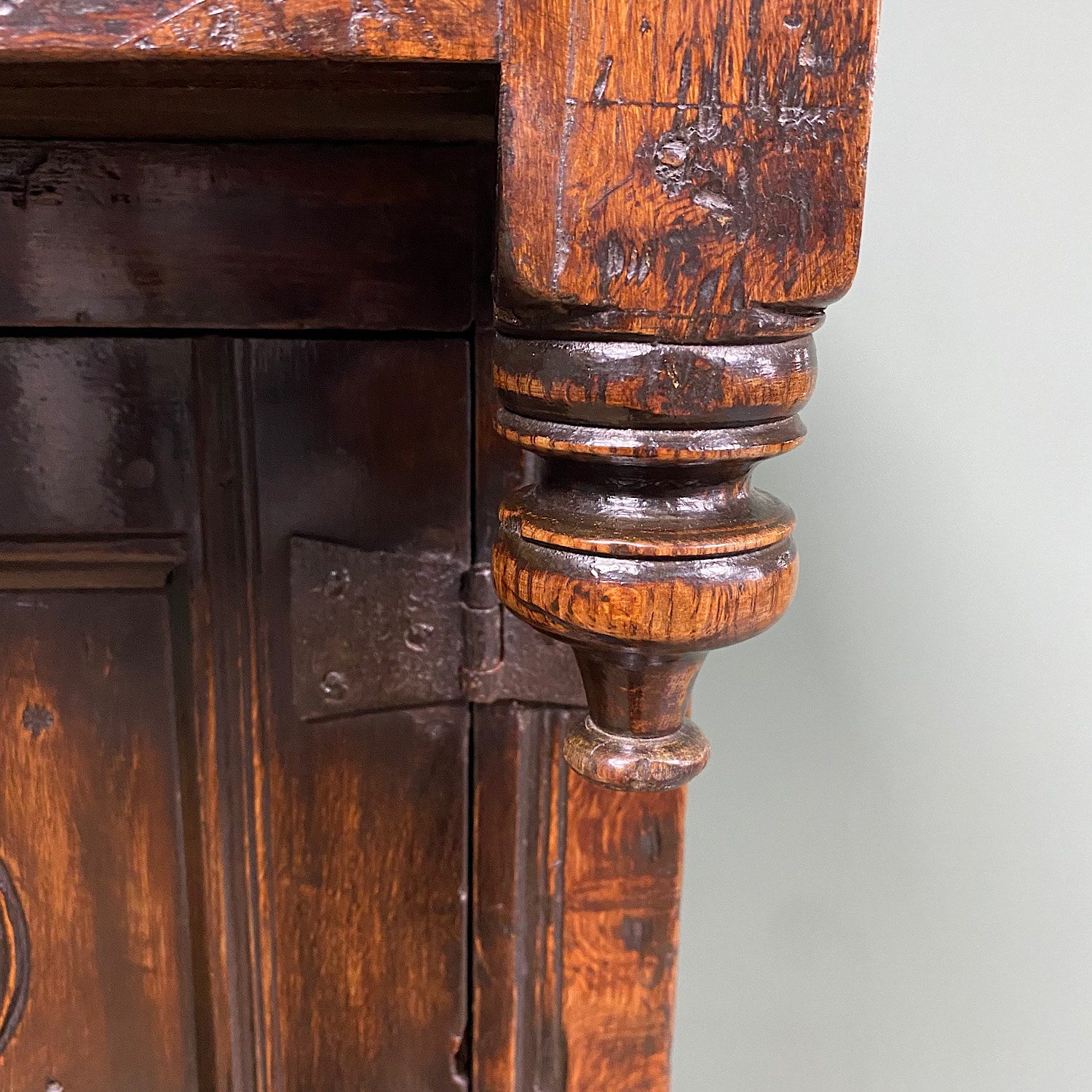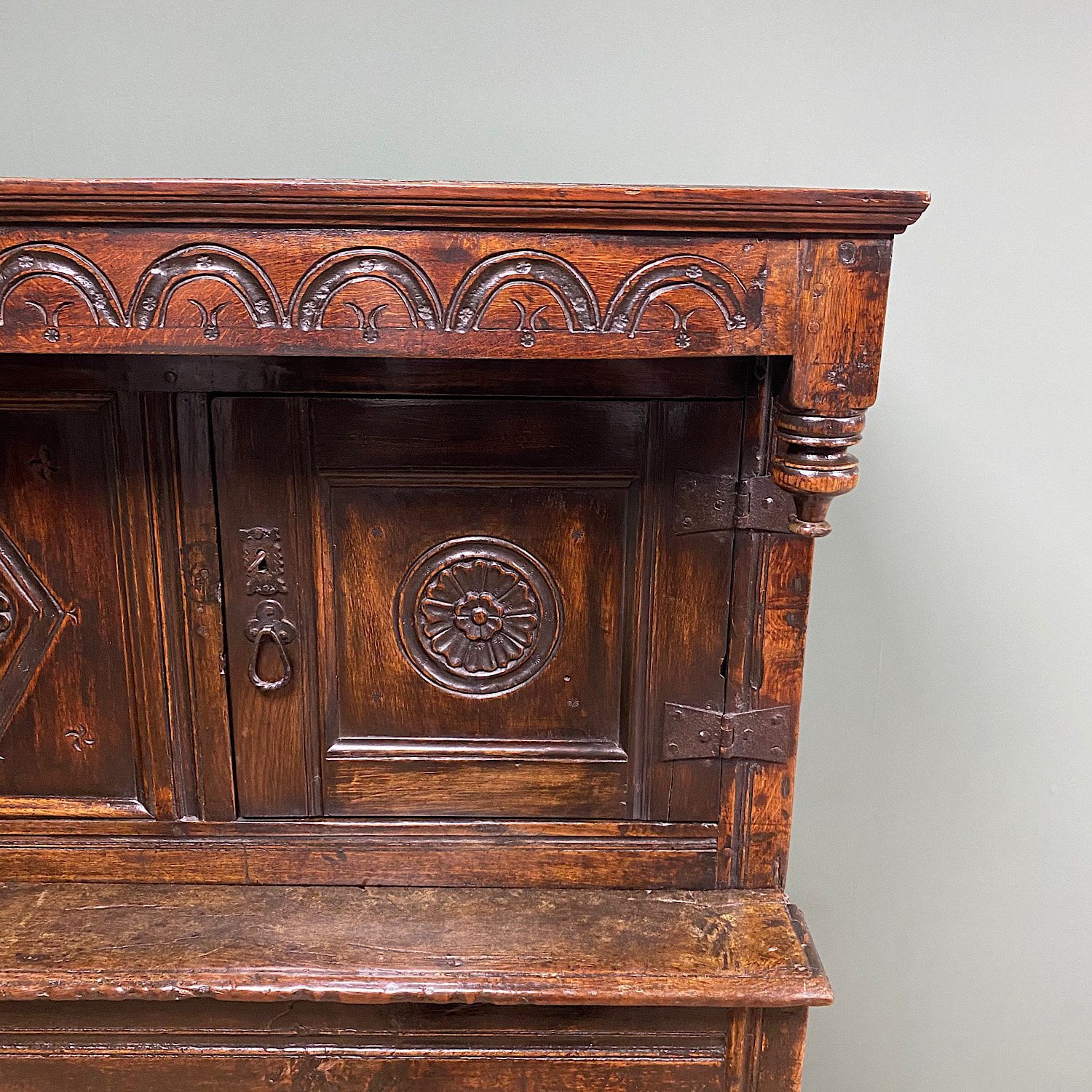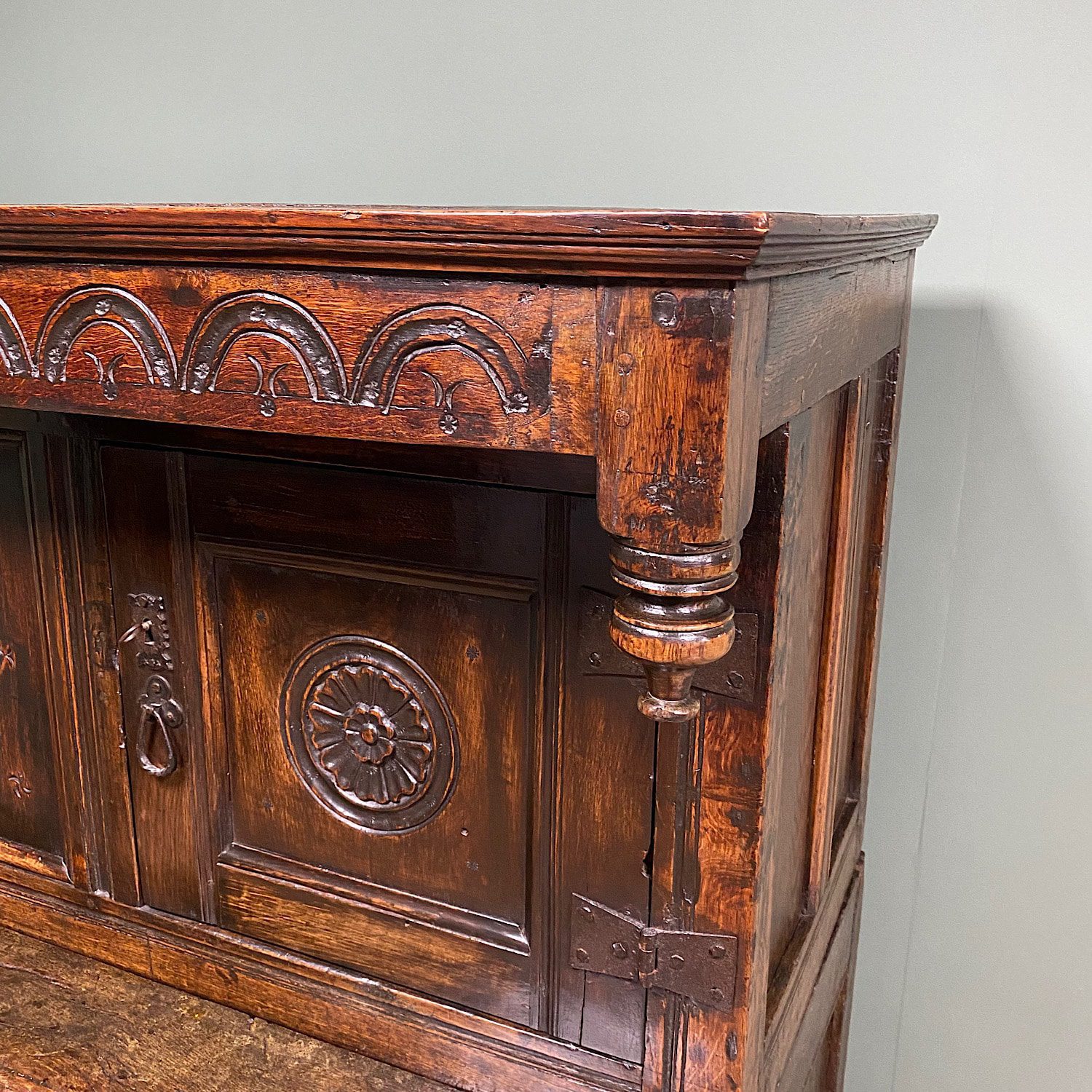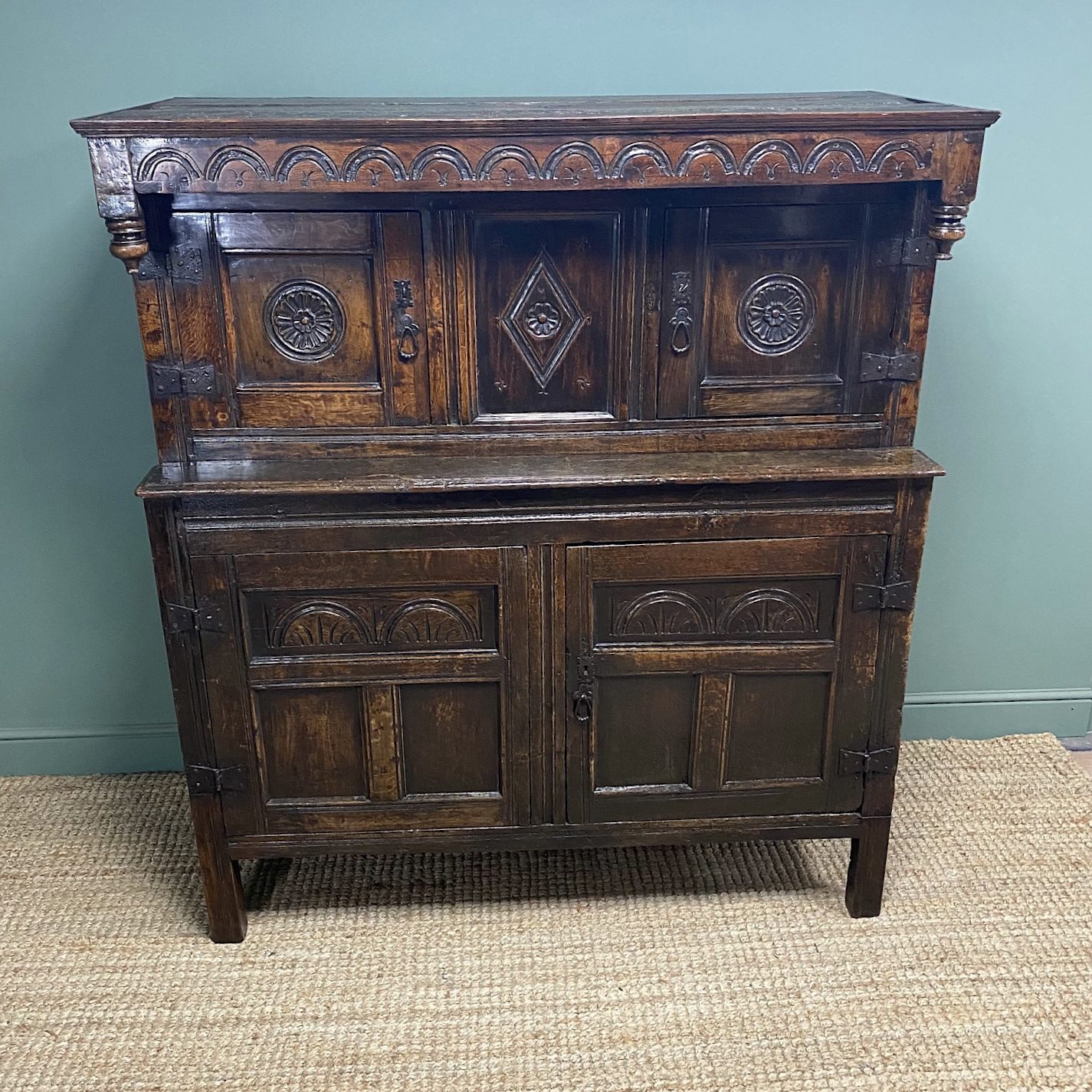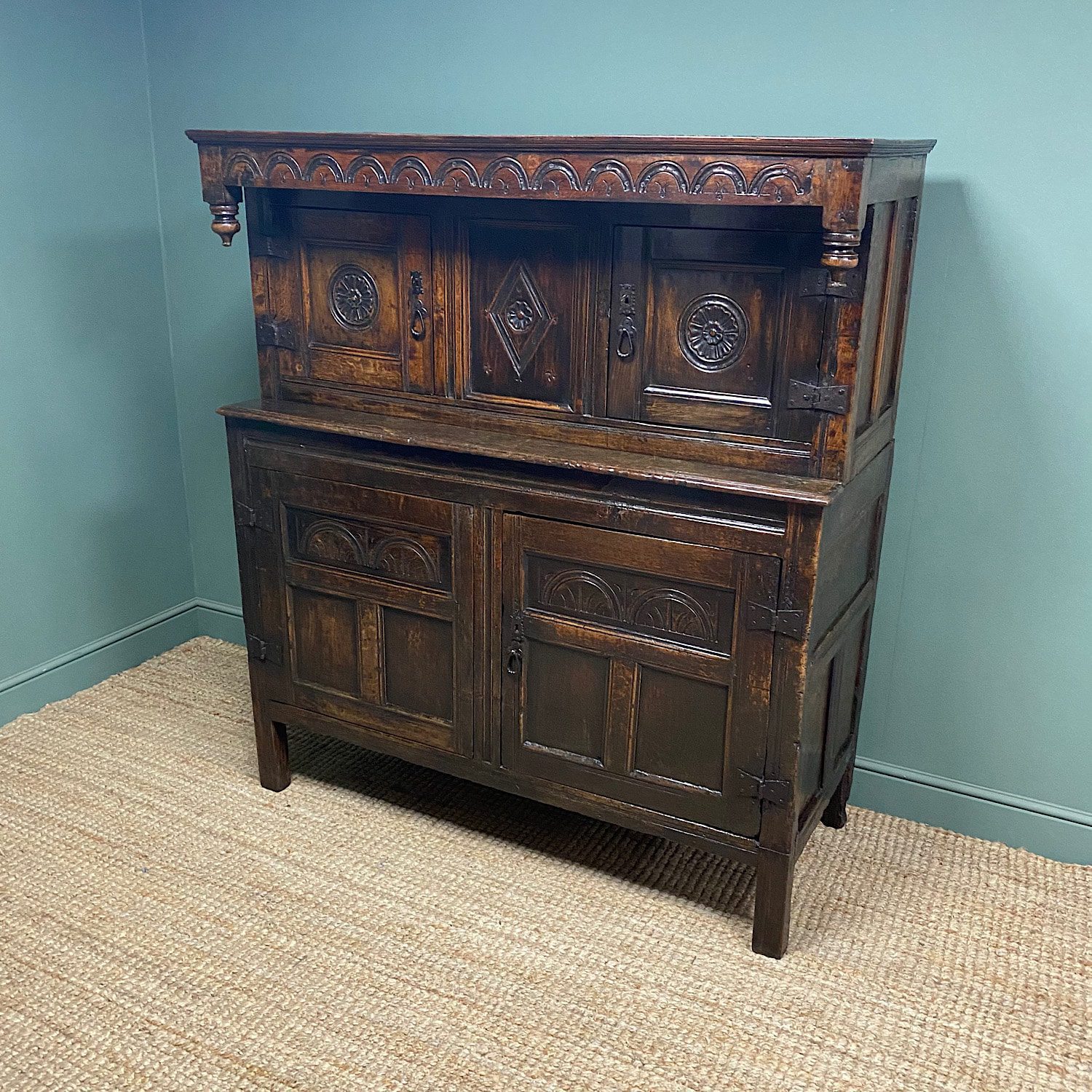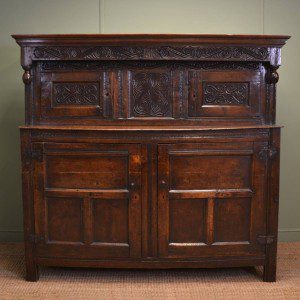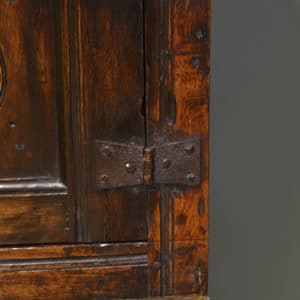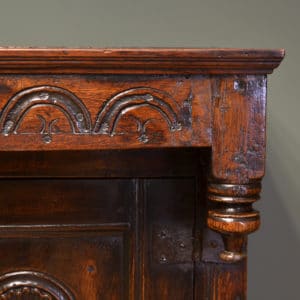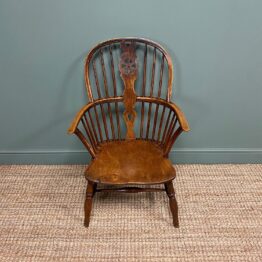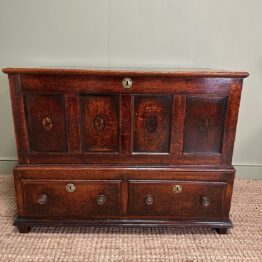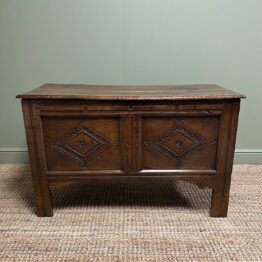Description
17th Century Period Oak Antique Court Cupboard
This beautiful English 17th Century Period Oak Antique Court Cupboard is of good smaller proportions and is a real stately home piece. It has a moulded cornice above a deep carved frieze with finials above three beautiful carved panels, two of which are doors with iron hinges, key escutcheons and handles. The lower section has a rectangular moulded top above two cupboard doors with moulded carved panels and again iron hinges. This period Oak cupboard stands on raised legs, has a good old repairs, charm and character consistent with age and use, has oak back and base boards, panelled sides and is of a pegged construction. It splits into two sections for ease of removal and the Oak has aged to a rich dark oak colour with a striking grain, good patina, is in very good condition and has been beautifully cleaned using a traditional form of Oak wax finishing.
Height 163 cm / 64 inches
Width 145 cm / 57 inches
Depth 64 cm / 25 inches
Ref No: 08280
Please click on antique furniture image for larger photo.
Standard One Man Delivery £85 + VAT within mainland England, Scotland and Wales
Two man assembled delivery – Quote upon Request
Our antiques come with a 28 day money back guarantee, see terms & conditions.
Overseas Insured Door to Door Shipments – Quote upon Request
What is an Antique Court Cupboard?
Antique Court Cupboards were first seen in the early 16th Century in Tudor homes and great halls. These early forms of antique furniture are usually built in solid English oak and have primitive construction like wooden pegs and old iron work straps along with clout nails. Antique court cupboards were designed to store cups, vessels and plates, along with displaying the master of the house’s large plate in the centre. It was the earliest form of antique sideboard on record. It got its name due to the fact, they are quite short pieces of furniture and the word ‘court’ is the Norman word for short and it also being a cupboard. They were only seen in very wealthy households, as these magnificent pieces would have been very expensive to build in such early periods. The best examples are of good smaller proportions from the 17th Century with panels that are outstandingly carved and have two turned finial droplets. Due to their age, they will have good old repairs, charm and character consistent with age and use, it makes them a real stately home piece.

